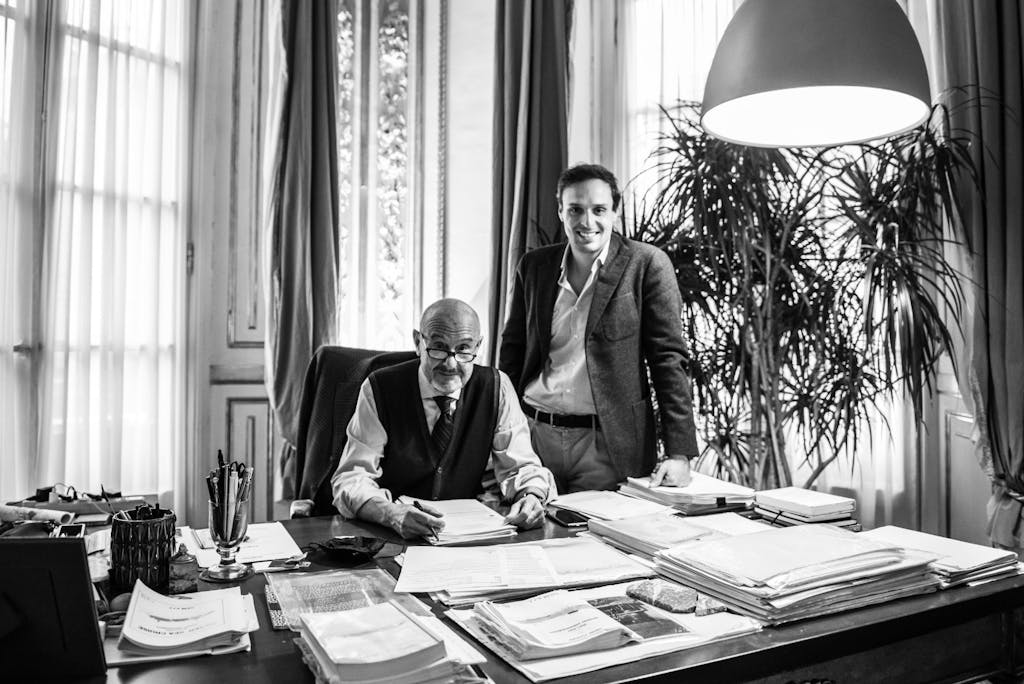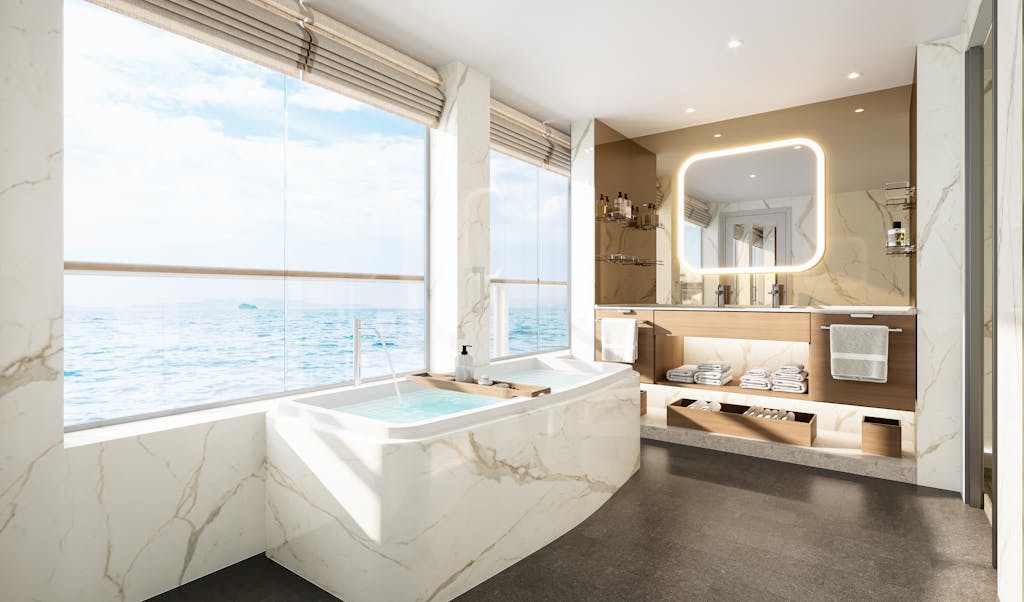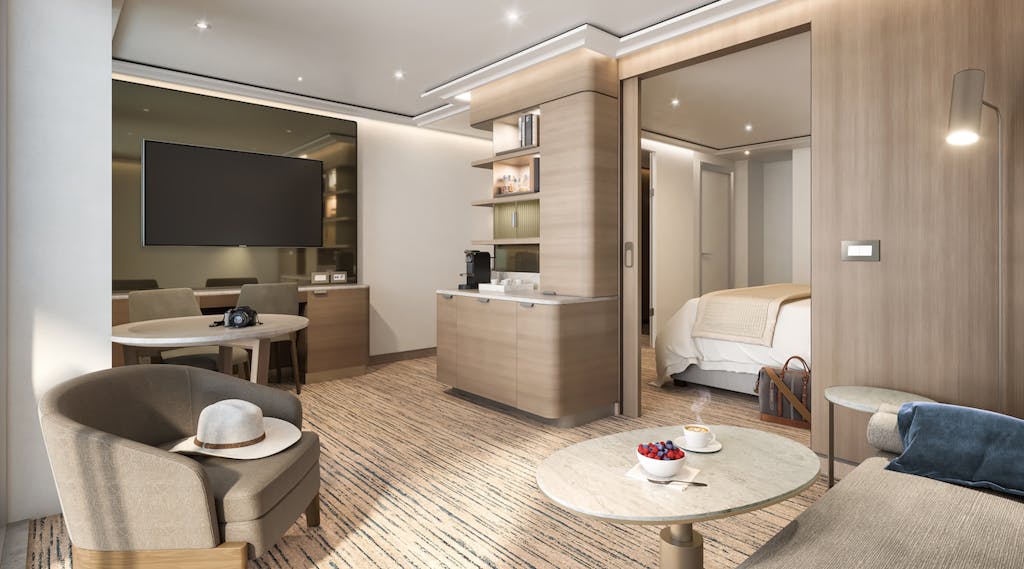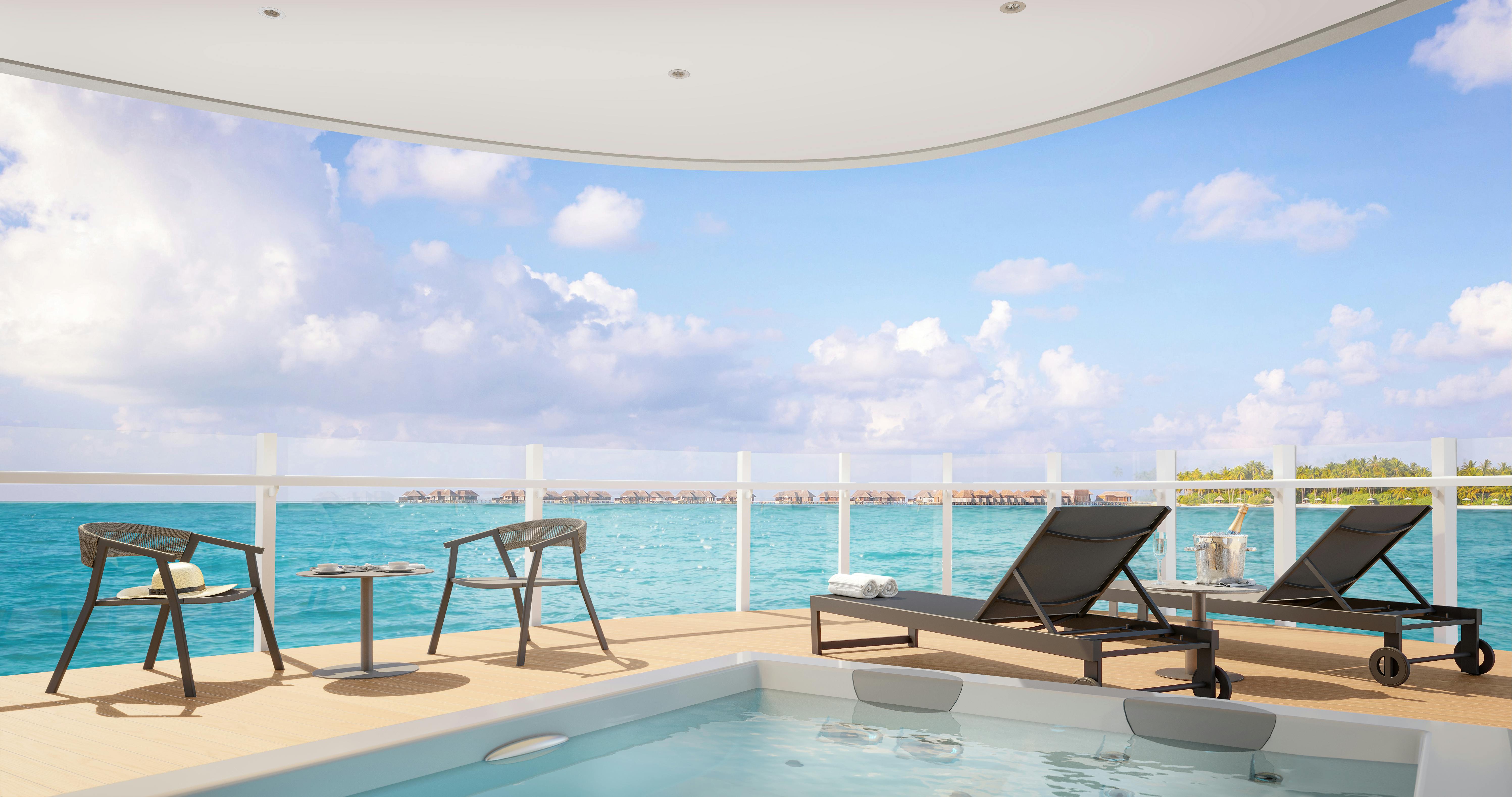Suite Dolce Vita: A Look at Silver Nova’s New Suite Accommodations
What goes into conceiving and designing suites for Silversea’s discerning clientele? How does a cruise line move the look of its fleet into the future while maintaining its beloved, carefully curated sense of discrete luxury?
By the time steel was laid for Silver Nova, Silversea’s newest vessel and the first in an entirely new class of ship design, a team of internationally-renowned architects and designers were well into plans for Silver Nova’s groundbreaking asymmetrical design, seven new categories of suites, and lots of windows that will provide a new sense of openness for the cruise experience.
To get insights into the process, we talked to Lorenzo Mortola of the Genoa-based architecture firm GEM Design, the company started in 1985 by his father, marine architect Giacomo Erasmo Mortola. GEM has been involved in planning and concepts for noteworthy cruise ships. In 2006, GEM was engaged by Silversea Cruises to work on its newest ship, Silver Spirit, and the refitting of Silver Explorer.
Lorenzo joined the firm in 2012, after earning Masters’ degrees in Naval Architecture and Interior Design at the University of Southampton and the Politecnico di Milan, respectively. Lorenzo has been intimately involved in the delivery of the Muse-class ships (including Silver Muse, Silver Moon and Silver Dawn), along with Silver Origin, Silversea’s expedition ship dedicated to the Galapagos. Now he is on the front lines with Silver Nova, the line’s first ship powered by liquified natural gas (LNG).

There are many companies a cruise line could go to for ship design. Why does Silversea look to GEM Design?
When my father first engaged with Silversea, he had already made a name for himself as an established ship designer. But my father always had a good relationship with Silversea, and there was an affinity in terms of the interpretation of the brand vision. Although our designs are meant for the luxury market, they are not overstated — they are what Silversea calls ‘whispered luxury.’
How much does design for the luxury travel sector depend on the guest telling you what they want, versus a designer finding new ways to communicate luxury to its guests? Who leads whom?
A staircase full of diamonds and very expensive materials can be perceived as luxury by some people, but not by the Silversea guest. We think that luxury is more a state of mind rather than something you can actually see and touch.
For example, Silversea has a large variety of different restaurants offering cuisines from around the world. Luxury could be the freedom to be able to choose wherever and whenever the guest wants to go. That, by itself, is already perceived as a luxury. Another thing is travel as enrichment and Silversea offers services and lectures, so the guest is traveling but also having an enriching experience.
I personally love cooking, and when I backpack around East Asia, I always try to do cooking lessons here and there. Silversea has created the S.A.L.T. program. So when you’re sailing in a particular region, you are able to enjoy local recipes in the restaurant, and you will have a lecture on how to prepare those particular recipes on board. That, to me, is quote a unique experience. And to be able to do that on a cruise ship that is moving to a new place every day is a good service.
Silver Nova is part of a brand new class of ships for Silversea. From a design perspective, does this mean Silversea is compromising and moving away from its Italian heritage?
We work with many different Italian suppliers, because they have been involved in cruise ship building for many years. There is a network of specialized suppliers in Northeast Italy, around Milan, and also in Genoa. There are also important names in land-based design that work on cruise ships. We work a lot with a fabric maker that comes from Venice, we use loose furniture like sofas and ottomans from Northeast Italy, and you will find Italian design and quality in the furniture and cabinets.

How is the suites’ layout different on Silver Nova?
Silversea’s previous classic vessels have what we call vertical distribution — cabins on every deck in the center and forward part. The public areas are mainly on the aft part, on every deck. On Silver Nova it’s different, a horizontal distribution. The cabins are concentrated on decks six to nine for the entire length, and then you have public areas running the entire length on lower decks and upper decks. That means that some suites will be facing directly aft, and we will have a very nice glass façade that opens directly onto the veranda and facing the sea. This is something very new for Silversea’s classic fleet.
Silver Origin, the most luxurious ship sailing in the Galapagos, also has suites facing directly aft.
Tell me about the new types of suites to be introduced on Silver Nova, starting with the two Otium Suites, based on Silversea’s wellness program that emphasizes indulgence more than sacrifice, and which now appear to be the top accommodations in the fleet.
In the Otium Suites there is a very large living room area, a dedicated dining area with table and minibar, and the living room. The new thing is the position, in the aft starboard corner, which gives the possibility of having a very large balcony facing directly aft. The Otium Suite also has a Jacuzzi on the balcony, a new feature for Silversea. The suite has a wall of windows that looks directly onto the sea, which also is quite a new feature. Meaning, that it’s not a conventional window, but a huge, floor-to-ceiling façade of glass that looks aft and to the side of the vessel with 270-degree views.
These are the largest cabins on the ship — 1,324 square feet including the veranda — but the Otium Suite is not just about the architectural content. There will be some dedicated services for guests in the Otium Suites beyond the Otium experiences available in all categories.
The Master Suite category is also new, and is, essentially, a smaller version of the Otium Suites?
That is correct. They are somewhat “smaller,” from 721 to 826 square feet, but obviously still roomy. The position of the bedroom is slightly different, and it has quite a large balcony that wraps around the aft corner of the ship. On one Master Suite, the bathroom is on the side of the vessel, which offers the opportunity to open up the view onto the balcony and the sea, so quite a novel feature for Silversea. On the other ships, bathrooms are indoors, and there are no windows onto the sea. Silver Origin, Silversea’s expedition ship in the Galapagos Islands, was the first in the fleet to have suites with this type of bathroom, where the bathtub and shower is framed by a large window.
The Signature Suite also has a bathroom with a Jacuzzi that faces the balcony and sea with a large window, and the Medallion Suite is another new type of cabin Silversea has never had before. It is one-and-a-half times the width of the standard veranda suite, so a more spacious cabin, with 527 square feet of living space, including the larger balcony.
Tell me about the types of new design features that will be introduced in Silver Nova’s suites.
One of the drivers has been to add a “residential” touch to the suites, so a lot of attention has been put into details for the furniture, as well as in the design for decorative lighting.
Wall details in way of the windows and balcony doors have been modified to open up as much as possible the view onto the balcony and the sea, and the balcony doors themselves have thinner frames to maximize the view
We are looking at metals for the hardware, for example, for handles of the drawers, for the frames for mirrors and other details. Inside the suites we are using a type of fluted mirror — not a flat surface, but one that creates intriguing reflections and has a kind of 3-D depth. We are using this to cover the doors of the cabinets and the bar counter.

How has Silversea’s approach to interior design changed through the years?
For sure, there is a drive to evolve, so today you will see a more modern touch. The difficult part is to evolve but to maintain the Silversea DNA. For example, we like natural materials and the perception of tactility, and advances in certain materials has opened possibilities for us.
When Silver Spirit was originally designed in 2006, porcelain was not much in use in the cruise ship business, but in recent years it has become more popular. That was quite a big change, because we went from carpet covering most of the ship to using ceramic and porcelain tiles. With the lengthening and renovation of Silver Spirit, there was a clear change in design, starting with the colors — the stipulation was for cleaner and brighter. Then, for Silver Muse we moved away from the art deco theme found on Silver Spirit, and toned down the architectural package using more neutral materials and color accents. Also lighting technology has evolved a lot in the recent years, allowing designers to specify new types LED lights, with custom color temperature, thus allowing to create warmer and more intimate ambiances as needed.
There is also a trend toward sustainable design, and for ships beyond Silver Nova we are looking into materials produced from discarded plastic bottles, bringing innovation and evolution to the design while maintaining the DNA through the use of fabrics and textiles.
Although our designs are meant for the luxury market, they are not overstated. I repeat this because it’s what makes Silversea so distinctive: Whispered Luxury.
